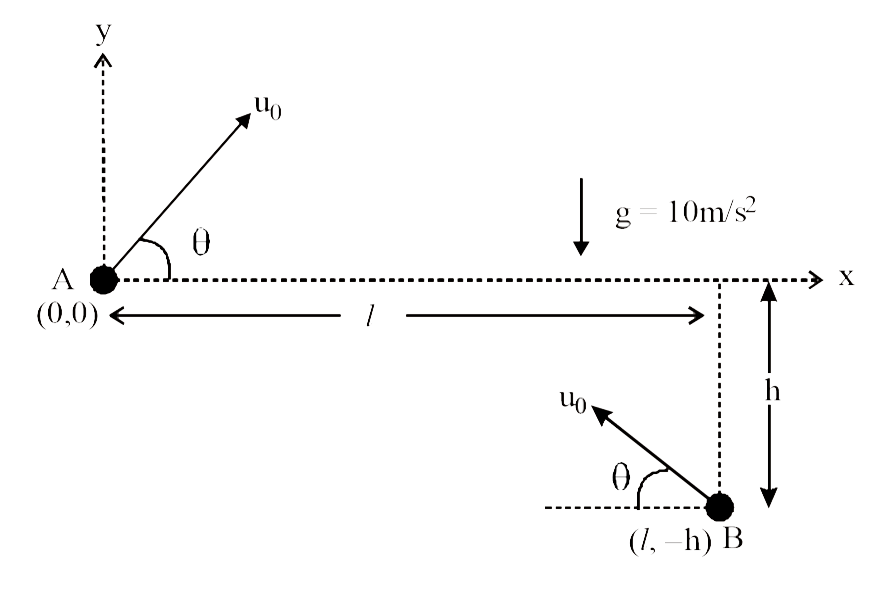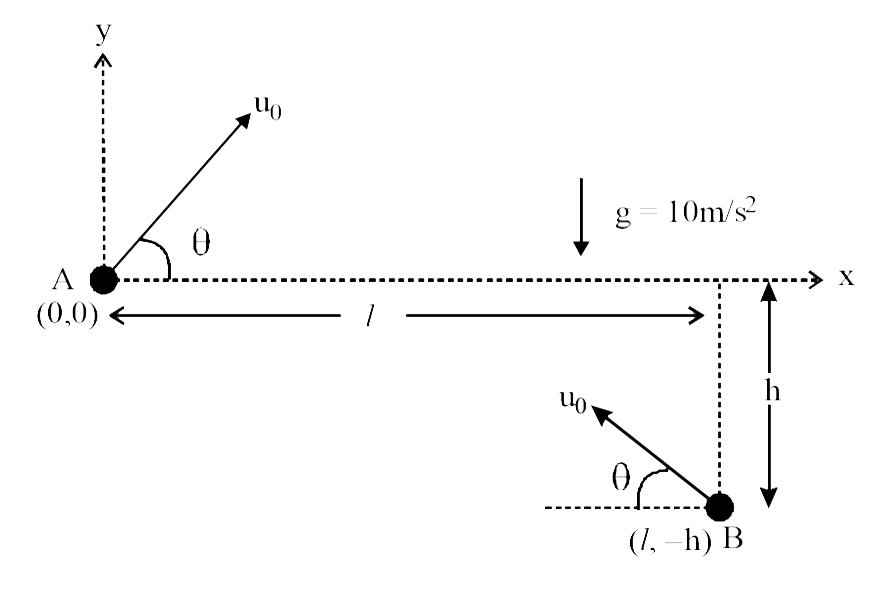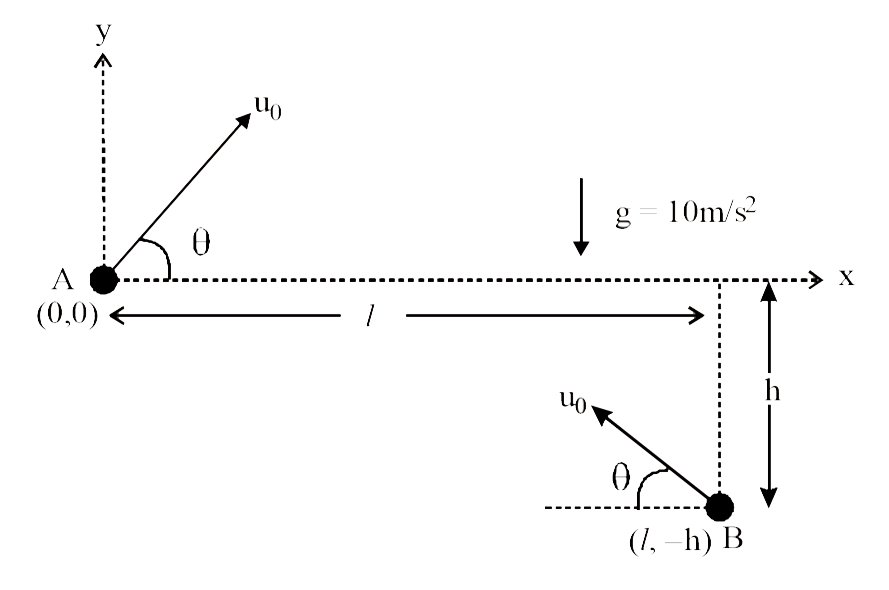There of the fundamental constant of physics are the universal gravitational constant, G=6.7×10−11m3kg−s−2, the speed of light c=3.0×108m/s and Planck's constant, h=6.6×10−34Js−1. two particles A and V are projected in the vertical plane with same initial velocity u0 fro part (0,0) and (l,-h) towards each other as shwon in figure
The path of particle A with respect to particle B will be –

Parabola
straigh line parallel to x-axis
straight line parallel to y-axis
none of these
Step by step video & image solution for There of the fundamental constant of physics are the universal gravitational constant, G=6.7xx10^(-11) m^(3) kg^(-) s^(-2), the speed of light c=3.0xx10^(8) m//s and Planck's constant, h=6.6xx10^(-34) Js^(-1). two particles A and V are projected in the vertical plane with same initial velocity u_(0) fro part (0,0) and (l,-h) towards each other as shwon in figure The path of particle A with respect to particle B will be – by Physics experts to help you in doubts & scoring excellent marks in Class 12 exams.
Topper's Solved these Questions
Similar Questions
There of the fundamental constant of physics are the universal gravitational constant, G=6.7×10−11m3kg−s−2, the speed of light c=3.0×108m/s and Planck's constant, h=6.6×10−34Js−1. two particles A and V are projected in the vertical plane with same initial velocity u0 fro part (0,0) and (l,-h) towards each other as shwon in figure
Minimum distance between particle A and B during motion
 View Solution
View SolutionThere of the fundamental constant of physics are the universal gravitational constant, G=6.7×10−11m3kg−s−2, the speed of light c=3.0×108m/s and Planck's constant, h=6.6×10−34Js−1. two particles A and V are projected in the vertical plane with same initial velocity u0 fro part (0,0) and (l,-h) towards each other as shwon in figure
The time when separation between A and B is minimum is
 View Solution
View Solution
Knowledge Check
- Question 1 - Select One
The value of universal gravitational constant G=6.67×10−11Nm2kg−2. The value of G in units of g−1cm(^(3)s−2 is
A6.67×10−8B6.67×10−7C6.67×10−9D6.67×1010 - Question 2 - Select One
The energy of a photon wavelength k=1 meter is (Planck's constant =6.625×10−34 Js, speed of light = 3×108m/s)
A1.988×10−23JB1.988×10−28JC1.988×10−30JD1.988×10−25J - Question 3 - Select One
Calculate the energy in joule corresponding to light of wavelength 45 nm (Planck.s constant h=6.63×10−34 Js, speed of light c=3×108ms−1)
A6.67×1012B4.42×10−13C4.42×10−18D6.67×1012
If the speed of light c(=3×108m/s), Planck's constant h(=6.6×10−34J−s) and gravitational constant G(=6.67×10−11mksunits) be chosen as fundamental units, find out the dimensions and value of unit of mass.
View SolutionFind the wave number of a photon having an energy of 2.072 eV.
Given :
Charge on electron =1.6×10−19C
Velocity of light air =3×108 m/s
Planck's constant =6.63×10−34 J-s.View SolutionIf the speed of light c(=3×108m/s), Planck's contant h(=6.6×10−34J−s) and gravitational constant G(=6.67×10−11MKS units) are chosen as the fundamental quantities, find out the dimensions and value of units of (a) mass, and (b) time in this system.
View SolutionCalculate the acceleration due to gravity on the earth 's surface , given that gravitational constant G=6.7×10−11 SL unit , radius of he earth = 6.4×106m and mean density of earth = 5.5×103kgm−3.
View SolutionCalculate the energy in joule corresponding to light of wavelength 45nm :
(Planck' constant h=6.63×10−34Js , speed of light c=3×108ms−1)View Solution

